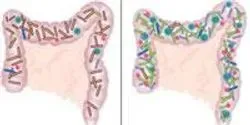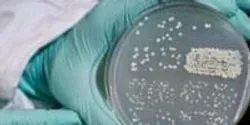Biological Sciences

Researchers from North Carolina State University, Duke University and the University of Copenhagen have created the world’s largest DNA origami, which are nanoscale constructions with applications ranging from biomedical research to nanoelectronics.

Problem: PCR is used to detect or quantify nucleic acid sequences in research and diagnostic settings. While high specificity is often achieved, experimental design sometimes necessitates that primers be placed in suboptimal locations. This can lead to problems like the formation of primer dimers or off-target amplification of homologous sequences. The formation of primer dimers consumes primers and other reaction components, which can result in reduced target amplification. These structures can also generate false positive signals in real-time PCR assays that use DNA intercalating dyes to monitor amplification. Off-target amplification is particularly problematic with low copy-number targets because of the high number of cycles required for amplification and in multiplex assays, where many different primers must function well together.

Caltech researchers have developed a novel way to visualize proteins generated by microorganisms in their natural environment—including the murky waters of Caltech's lily pond, as in this image created by Professor of Geobiology Victoria Orphan and her colleagues. The method could give scientists insights to how uncultured microbes (organisms that may not easily be grown in the lab) react and adapt to environmental stimuli over space and time.

Infant rhesus monkeys receiving different diets early in life develop distinct immune systems that persist months after weaning, a study by researchers from UC Davis, the California National Primate Research Center (CNPRC) at UC Davis and UC San Francisco has shown. The study, which compares breast- and bottle-fed infants, appears online September 3 in Science Translational Medicine.

The ability to accurately repair DNA damaged by spontaneous errors, oxidation or mutagens is crucial to the survival of cells. This repair is normally accomplished by using an identical or homologous intact sequence of DNA, but scientists have now shown that RNA produced within cells of a common budding yeast can serve as a template for repairing the most devastating DNA damage – a break in both strands of a DNA helix.

When they are not busy attacking us, germs go after each other. But when viruses invade bacteria, it doesn’t always spell disaster for the infected microbes: Sometimes viruses actually carry helpful genes that a bacterium can harness to, say, expand its diet or better attack its own hosts.

What if repairing large segments of damaged muscle tissue was as simple as mobilizing the body’s stem cells to the site of the injury? New research in mice and rats, conducted at Wake Forest Baptist Medical Center’s Institute for Regenerative Medicine, suggests that “in body” regeneration of muscle tissue might be possible by harnessing the body’s natural healing powers.














